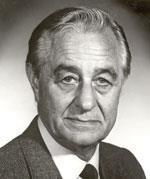35 years ago in Chemistry in Britain

When I arrived at Cambridge in 1947 to work for Ronald Norrish, I was set the problem to find out more about the CH2 radical. We used an army searchlight which had to be run from a large diesel engine on the back of a lorry parked outside the Cavendish Laboratory. When I arrived on a cold winter morning my first job was to start this by hand. On a visit to collect a new lamp for the searchlight I saw flash lamps being made at Siemens in Preston - it became obvious to me that this would be a way of introducing pulses of energy to study short-lived reaction intermediates.
Sir Harry Melville, who was chairman of the Faraday discussion on the labile molecule in 1947, summarised the prevailing attitude in his introductory statement that intermediates with lifetimes as short as 10-3 seconds were far beyond direct physical measurement (From an interview with Sir George Porter, Chemistry in Britain, November 1975)
Ed. Porter went on to receive the 1967 Nobel prize for chemistry along with Norrish and Manfred Eigen ’for their studies of extremely fast chemical reactions, effected by disturbing the equilibrium by means of very short pulses of energy’. This work, which started with studies in the millisecond range, was later extended to the micro- and nanosecond range.
Since 1967 we have seen Ahmed Zewail receive the 1999 Nobel prize in chemistry ’for his studies of the transition states of chemical reactions using femtosecond (10-15 sec) spectroscopy’, and in 2010 we reported studies at the attosecond (10-18 sec) level (see Chemistry World, July 2010, p31).












No comments yet